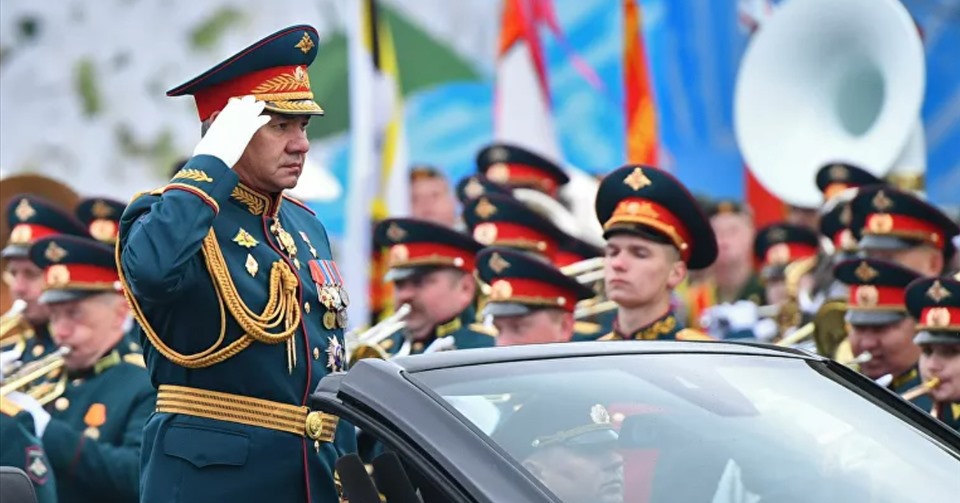Russia has launched a series of measures, from requiring foreign countries to buy gas in rubles to sharply raising interest rates, helping the domestic currency revive strongly.
Russia said last week it wanted European countries to buy its gas in rubles instead of dollars or euros. A month ago, that might have been a good offer, when the Russian currency fell 40% against the dollar, standing at 139 rubles to the dollar, after Moscow suffered a series of sanctions from the West due to the military campaign. in Ukraine.
However, after falling to a record low on March 7, the Russian ruble has recovered strongly. The current exchange rate is 84 rubles per dollar, the same as it was right before the Ukraine conflict broke out on February 24.
So how did Russia rescue its currency amid a series of sanctions that are making the economy more difficult than ever?

A woman walks past a foreign currency exchange office in central Moscow, Russia, on February 24. Photo: AFP.
According to Paddy Hirsch, veteran economic commentator of NPR, there are many reasons for the ruble’s strong recovery. The first is thanks to a huge loophole in the series of sanctions imposed by the West on Russia: Gas.
Sanctions are introduced by the West to limit Russia’s ability to collect foreign currency, especially dollars and euros. However, some European countries continue to buy gas from Russia because they are too dependent and do not have enough alternative suppliers to meet demand.
Bloomberg Economics forecasts that Russia will collect nearly $321 billion from energy exports in 2022, up more than 30% from last year, if its major customers, especially the European Union (EU), continue to buy oil and gas from Moscow.
Rising oil and gas prices, as well as Russia maintaining good trade relations with other major economies such as China or India, led to a steady flow of foreign currency into the country. As a result, concerns that Russia might become insolvent were allayed, helping to set a floor for the ruble.
Another loophole in the Western sanctions system is the exceptions to government debt.
One of the strongest and most impactful sanctions is the order to freeze Russian foreign accounts. Moscow holds about 640 billion USD worth of foreign currency, mainly concentrated in USD, euro, Japanese yen and some other foreign currencies at banks around the world. About 50% of these are located in the US and Europe. Western sanctions prevent Russia from accessing the money, unless it is used to pay back its government debts.
The US Treasury Department left the door open for financial intermediaries to process Russian payments. That door will probably be closed in April, but it has been of great help to Russia. Without it, Russia would likely have to increase its dollar holdings by selling rubles, putting downward pressure on the local currency. If Russia cannot raise enough USD, Russia will default on its debt.
The gap in the sanctions wall was an external factor driving the ruble’s rally. Internal factors are less noticeable, according to Hirsch.
On February 28, the Central Bank of Russia raised interest rates to 20%. Any Russians looking to sell rubles for dollars or euros will now have a greater incentive to keep their money in savings. The fewer rubles sold, the lower the downward pressure on prices.
This was followed by a decision by the Russian government to require businesses to sell 80% of foreign currency proceeds in exchange for rubles. This means that if a Russian steel producer makes 100 million euros selling to a company in France, they have to convert 80 million euros of that into rubles, regardless of the exchange rate.
Countless Russian companies are doing business with foreign partners, collecting money in euros, dollars and yen. The order to convert 80% of revenue into rubles created significant demand for the Russian currency, helping it to appreciate.
The Kremlin also issued a decree banning Russian brokers from selling securities owned by foreigners. Many foreign investors hold Russian company shares and government bonds. By banning these transactions, the Russian government wants to strengthen the stock and bond markets, while keeping money at home, all in an effort to prop up the ruble.
The government also aims to control the behavior of Russian citizens moving money abroad, helping to keep foreign currency at home and discouraging Russians from selling rubles for dollars or euros, greatly reducing pressure on the domestic currency. bad.
The above restrictions have been relaxed somewhat recently to make it easier for Russians who regularly transfer money abroad. However, the redemption level is limited to 10,000 USD for individuals, which will be maintained until the end of the year.
But experts say the biggest factor driving the ruble’s resurgence is President Vladimir Putin’s decision to ask “unfriendly” countries that buy Russian gas to pay in rubles.
Gas contracts in the past often required payment in euros or USD, and customers who bought a lot of gas, such as EU countries, the US, Canada, Australia, New Zealand, Japan or South Korea, often did not have rubles in reserve. great.
So, if Putin can force these countries to pay for their gas in rubles, they will have to find a place to buy the Russian currency, thereby increasing demand for the ruble, pushing up prices.
Those bullish predictions are said to have pushed the ruble’s market price up, though Russia later said it was in no hurry to ask the West to buy gas in rubles.
However, government interventions also come with risks. If Russia can reach some resolution regarding the Ukraine conflict leading to the lifting of sanctions and the restoration of trade relations with the West, the ruble could retain its current value as the government Russia withdrew the intervention measures.
However, if they are withdrawn when Russia has no solution to end the conflict, the ruble is at risk of collapse, severely affecting the economy, increasing inflation, making life difficult. of the people of this country.
“Some Russian government interventions will eventually have to be withdrawn. Russian banks cannot continue to pay 20% interest rates for long. Growth will be restrained amid the economic backdrop. Russia is forecasted to decline by 8% this year. Therefore, industries cannot avoid the decline, “said commentator Hirsch.
Vu Hoang (According to NPR)
at Blogtuan.info – Source: vnexpress.net – Read the original article here


